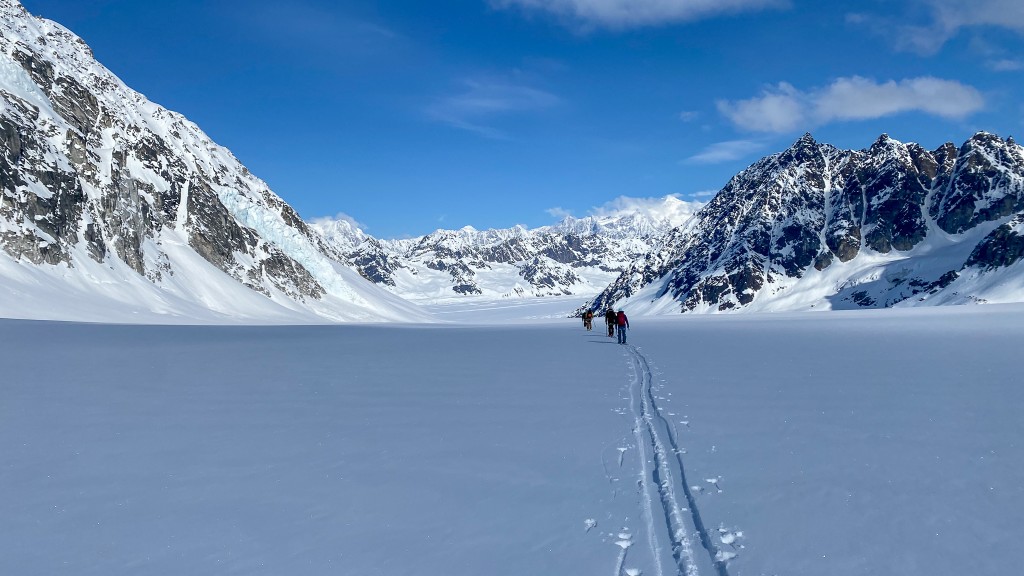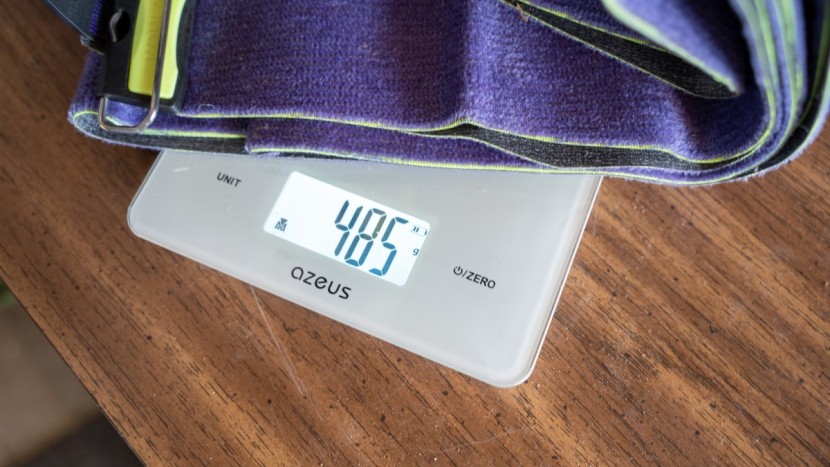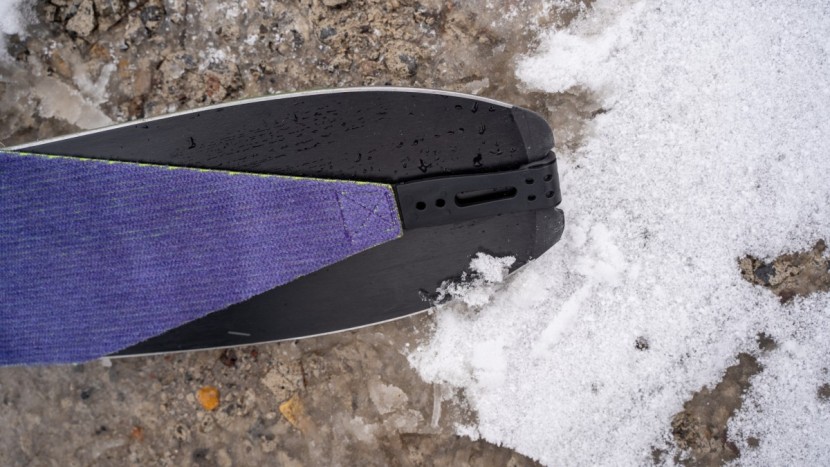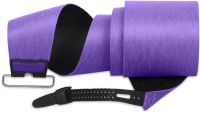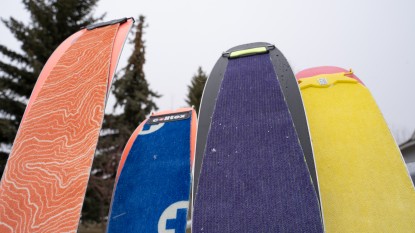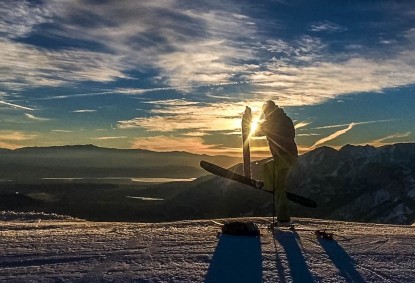
Our Verdict
Our Analysis and Test Results
The Kohla Freeride skins are light and compact, but the efficiency ends there. The branding suggests they'd be sturdy and forgiving. In other sectors of the backcountry ski market, “freeride” implies heavier, more durable, more downhill-experience-oriented gear. Or gear optimized more for mechanized access backcountry skiing. Skins are a funny thing to brand with the “freeride” moniker. Skis, boots, bindings, even clothing and backpacks are at least somewhat related to your downhill experience. Skins have nothing to do with your downhill experience; you only use them on the uphill. If anything, we might assume that “freeride” skins are easy to use and relatively forgiving for beginner or occasional users. The thin, flexible backing isn't really that user-friendly for beginners, and the high drag coefficient is especially undesirable to more experienced users. The ultra-compact, light form factor, might make them appealing to “sidecountry” users that want to tuck them in the bottom of a backpack for only very occasional use.
Glide
It only took a step or two for every tester on our team to ascertain that the Kohla Freeride skins glide poorly. In fact, other than some long-discontinued “high traction” skins from a different company, we cannot recall a set of skins that glided so poorly. With so many other options on the market, the low glide of the Kohla Freeride is virtually unjustifiable.
Portability
You want your skins to disappear, unnoticed, into your backpack for the downhill leg. The Kohla Freeride is among the lightest and most compact skins we have ever tested. Given that we test skins on a variety of skis, and therefore have tester skins cut to different dimensions, it is very difficult to objectively compare weight and bulk. That said, we are very confident that the Freeride skins are very compact and light. As compared to skins cut similarly, the Freeride is smaller than most of what is currently on the market.
Glue Integrity
Kohla's glue on the Freeride skins is excellent. It holds when it needs to and lets go with an appropriate amount of effort. In weeks of testing, we found no failures. True durability testing requires months of testing, and we will continue to slog and evaluate. With other skins, as the glue loses its integrity, stiffer fabric backing helps to keep the skins stuck on. Softer fabric rolls from the ski more readily, allowing snow to contaminate and deactivate the glue. We did not have this happen with the Kohla Freeride, but the backing is indeed very soft and minimal.
Grip
As might be expected, given the low glide performance, the Kohla Freeride skins grip pretty well. It is not exceptional, but it is significantly better than average. Grip is one of the weirder evaluation criteria for climbing skins. Given that all we really need skins to do is grip, more should always be better. If grip performance could be optimized in isolation, that would be the case. However, since increasing grip inherently reduces glide, there becomes a sweet spot for grip. That sweet spot for grip, in conjunction with bipedal biomechanics, requires less traction than you might first think. Your skins don't need to grip on super steep slopes; as terrain gets steeper, your stride loses efficiency well before average to low-grip skins will fail. All that said, the Kohla skins do indeed grip better than most. If you understand all the variables and still prefer maximum grip, you can do well with these Freeride skins.
Icing/Glopping Resistance
The long, grippy nap of the Kohla Freeride collects a tiny bit more ice and snow than others. Collecting huge clumps of snow on your skins is exhausting and annoying. There are technique adjustments you can make (pacing, micro route finding, waxing) to minimize glopping, but sometimes it just happens. When that is the case, the Kohla Freeride might be slightly more likely than certain better-waterproofed products.
Compatibility
The Kohla Freeride is as close to universally compatible as most. You buy them for length and then trim to width. The rigid tip loop is pretty forgiving of a variety of tip shapes, and the rubbery tail strap is our preferred general type.
Should You Buy the Kohla Freeride?
If you want very light and compact skins for only the most occasional use (think heli ski guides or sidecountry skiers that carry skins only for the weirdest of situations), the other quirks of the Kohla Freeride are likely worth overlooking. For normal backcountry skiing, the glide is just too poor to widely recommend.
What Other Climbing Skins Should You Consider?
If you like the light and compact nature of the Kohla Freeride but want better glide, check out the Pomoca Free Pro 2.0. If you like the high traction aspect of the Kohla Freeride but want better glide, the G3 Alpinist+ Glide or Pomoca Climb 2.0 will hook you up.
| Awards | |
|---|---|
| Price | $215 List |
Overall Score  |
|
| Star Rating | |
| Bottom Line | These are good skins for occasional use and extensive transport |
| Pros | Light and compact, rubbery tail strap |
| Cons | Poor glide |
| Rating Categories | Kohla Freeride |
| Glide (30%) | |
| Portability (20%) | |
| Glue Integrity (20%) | |
| Grip (15%) | |
| Icing and Glopping Resistance (10%) | |
| Compatibility (5%) | |
| Specifications | Kohla Freeride |
| Measured Weight (lbs per pair) | 1.07 |
| Material | Mohair and Nylon mix |
| Weight per Pair (Based on Ski Tested) | 485 g for Black Diamond Helio 115, 177 cm |
| Weight per Ski Width (grams/mm) | 2.10 |
| Glue | Traditional |
| Tip Attachment | Rigid tip loop |
| Tail Attachment | Vinyl strap and cam hook |
| Ski Compatibility | Universal |



